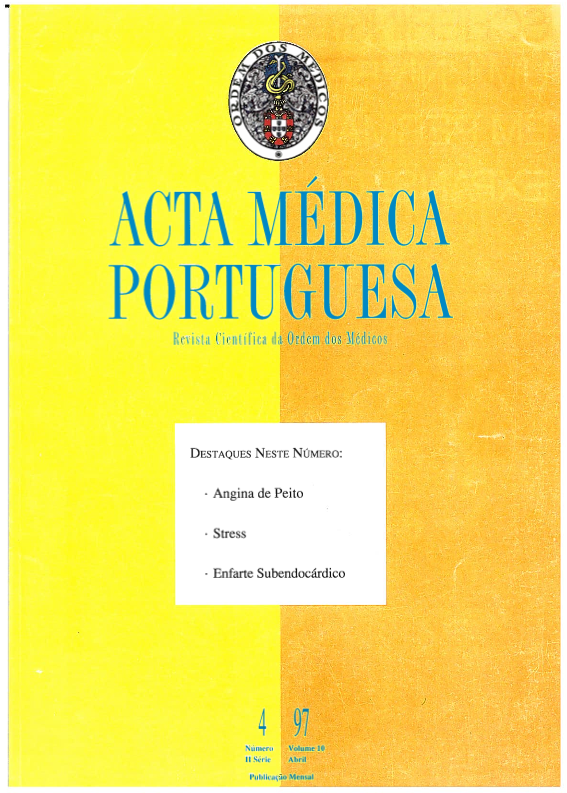Stress tests in old age. The choice of the stress protocol.
DOI:
https://doi.org/10.20344/amp.2410Abstract
To evaluate, in an elderly Portuguese population, the diagnostic capacities of the most popular treadmill stress test protocols.Retrospective study of an elderly Portuguese population submitted to a stress test.A population of 45 patients (35 male), aged 65 or more years, consecutively submitted to a stress test. The average age of the group was 67.8 +/- 2.9 years. The three protocols (Bruce, Bruce Modified and Naughton) were comparatively studied in terms of the patients capacity to execute the protocol, capacity to obtain a maximum and a diagnostic stress test, and the complications of the stress test protocol.The Bruce protocol was used in 19 patients, the Bruce Modified in 13 patients and the Naughton protocol in 13 patients. The three protocols did not lead to any complication. The Bruce protocol led to a larger increment in heart rate (p < 0.001) and to larger maximum rate pressure product (p < 0.05) than the Naughton one. The Bruce protocol obtained a larger number of diagnostic tests (p < 0.01) and a significantly lower number of inconclusive stress tests. The Naughton protocol led to a larger duration of the exercise tests and was not suitable for some of the elderly patients owing to the exhaustion of the protocol. The results obtained with the Bruce Modified protocol were among those of other two protocols.In the elderly, the stress tests are safe and useful in the diagnosis of exercise induced ischemia and in the stratification of cardiovascular risk. From the protocols studied, the Bruce protocol was the most adequate, globally speaking, for this group of patients. The Bruce protocol presented a better diagnostic capacity with no complications related to the protocol.Downloads
Downloads
How to Cite
Issue
Section
License
All the articles published in the AMP are open access and comply with the requirements of funding agencies or academic institutions. The AMP is governed by the terms of the Creative Commons ‘Attribution – Non-Commercial Use - (CC-BY-NC)’ license, regarding the use by third parties.
It is the author’s responsibility to obtain approval for the reproduction of figures, tables, etc. from other publications.
Upon acceptance of an article for publication, the authors will be asked to complete the ICMJE “Copyright Liability and Copyright Sharing Statement “(http://www.actamedicaportuguesa.com/info/AMP-NormasPublicacao.pdf) and the “Declaration of Potential Conflicts of Interest” (http:// www.icmje.org/conflicts-of-interest). An e-mail will be sent to the corresponding author to acknowledge receipt of the manuscript.
After publication, the authors are authorised to make their articles available in repositories of their institutions of origin, as long as they always mention where they were published and according to the Creative Commons license.









